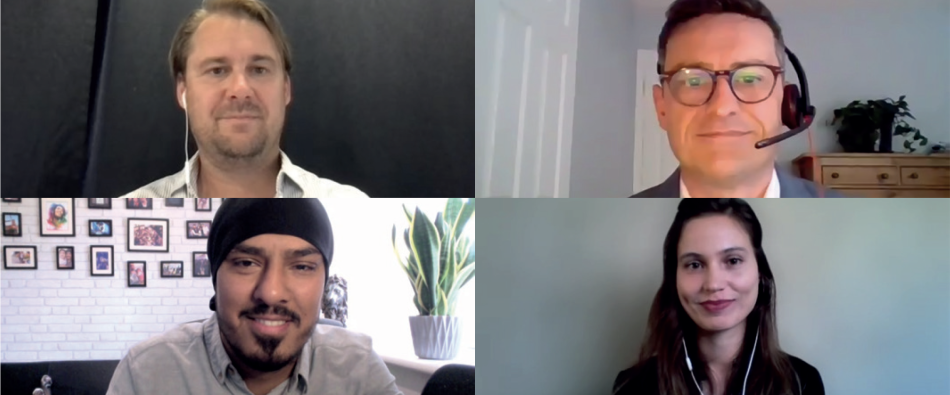INSPIRATION BUILT ON YOUNG DREAMS
This session of the FIA Conference 2021 focused on how integrate the new habits and desires of the younger generations to inform the development of mid-to-long term strategic orientations of the sport and mobility clubs and the FIA.

Opening the session, the Chairman of Bank Julius Baer Monaco Remy Bersier discussed how his organisation has adapted its business by analysing data to reach out to a younger audience.
“As a private bank active in wealth management since 1890, we have been at the forefront of an industry that had to permanently change and adapt to client needs and circumstances, particularly during periods of conflict,” he said.
“Our youth worldwide is educated and curious; youth clients want to know more about the purpose behind their investments, the new generation of investors wants opportunities aligned with their progressive value systems,” added Bersier. “They do not seek a range of investments that focus only on the accumulation of wealth, but also on the environment and societies they live in.”
Following this keynote, the discussion featured young leaders and Club representatives to discuss what matters to youth and how to make motor sport accessible and engaging for these audiences.
Derin Adetosoye, who was chosen through a talent search programme to become a presenter for the ABB FIA Formula E World Championship, believes that engaging young viewers through social media platforms and being environmentally aware to engage those viewers is important for motor sport.
“The stereotype of us youngsters having a short attention span is true. The level of excitement has to be communicated through social media channels, and through digital platforms to ensure that it’s reaching as many young people as possible. Breaking the sport into different elements so that it can attract different types of people is very important.
“I think, as a society, we’ve moved on from not talking politics to it being at the forefront of many conversations, and for a sport, I think it’s very important to know that you are seeing what’s going on and that you are directly responding to it,” said Adetosoye.
This was echoed by President of RGMMC Group and Promoter of FIA Karting European and World Championships James Geidel who believes that people want to see raw moments from drivers on screen that capture the essence of the story behind the scenes.
“It’s about producing content and making it entertaining, because people don’t just want something scripted today, they want something that gives an insight into what the sport is about. They want to see that we are not just a sport, that we are really trying to help make a global impact in what we are doing,” he said.
From a Club promotion’s point of view, President of Automóvel e Touring Clube de Moçambique (ATCM) Rodrigo Ferreira Rocha discussed the relevance of TV and showcasing national sport on international broadcast channels.
“Making our events available on other platforms like national TV and even foreign television stations is important. That makes the kart driver feel like they are doing something for their own country,” he declared.
To discuss how motor sport is tackling issues in the world and how that can be applied in education, the session welcomed Marina Djordjevic and Ciska van Huyssteen, two MBA students from the Kaiserslautern University of Applied Science studying Motorsport Management in Germany.
“I think it’s important to understand how the youth think today,” believes Djordjevic. “They want to be heard. They want to interact, but they also want to be taken seriously. I think a very good example of this is the Fanboost in Formula E, which gives the fans the chance to actually influence the race outcome.”
Road traffic injuries are the leading cause of death for young adults aged 15 to 29. The panel discussed how best to engage youngsters on this important topic.
Head of Communications at Youth for Road Safety Manpreet Darroch pointed out their presence at the third Global Ministerial Conference on Road Safety at Stockholm, Sweden in February 2020, as an example of young people who were advocating for road safety.
“Around 400,000 young people are killed on the roads every year. That’s more than 1,000 per day. This is why young people want to be aware and fight the crisis they see on the road, so the case for engaging people on road safety is a win for everyone,” he explained.
Vice President, Public Affairs at the Canadian Automobile Association (CAA) Ian Jack discussed how CAA’s team reiterated the point that social media was the best tool for getting the message across to the youth given the amount of people in the 16 to 24 age bracket that are active on the platforms.
“Many of you may know that Canada legalised cannabis in 2018, and we did a campaign on road safety. People have used drugs and driven before in the past, but now we had an opportunity to talk about it freshly given the legalisation process. What we are most proud of in that campaign, which targeted 16- to 24-year-olds online, is that we got over 700,000 engagements. So that’s people sharing it, liking it or making a comment about it,” he said.
Rafaela Machado, representing the Star Rating for Schools Global Programme at the International Road Assessment Programme (iRAP), echoed this by saying it is important for younger people to understand their voice. This is something iRAP looks at when delivering programmes and support to governments, local organisations and school communities on creating safer journeys to school.
“We need to let them know the power that they have and what they can do about road safety – and how they have been affected. It is possible for a community, for example, to identify the critical areas that should be prioritised for improvements along a school route and use that information to push for any policy changes that might be required around this topic.”

 Facebook
Facebook Twitter
Twitter






